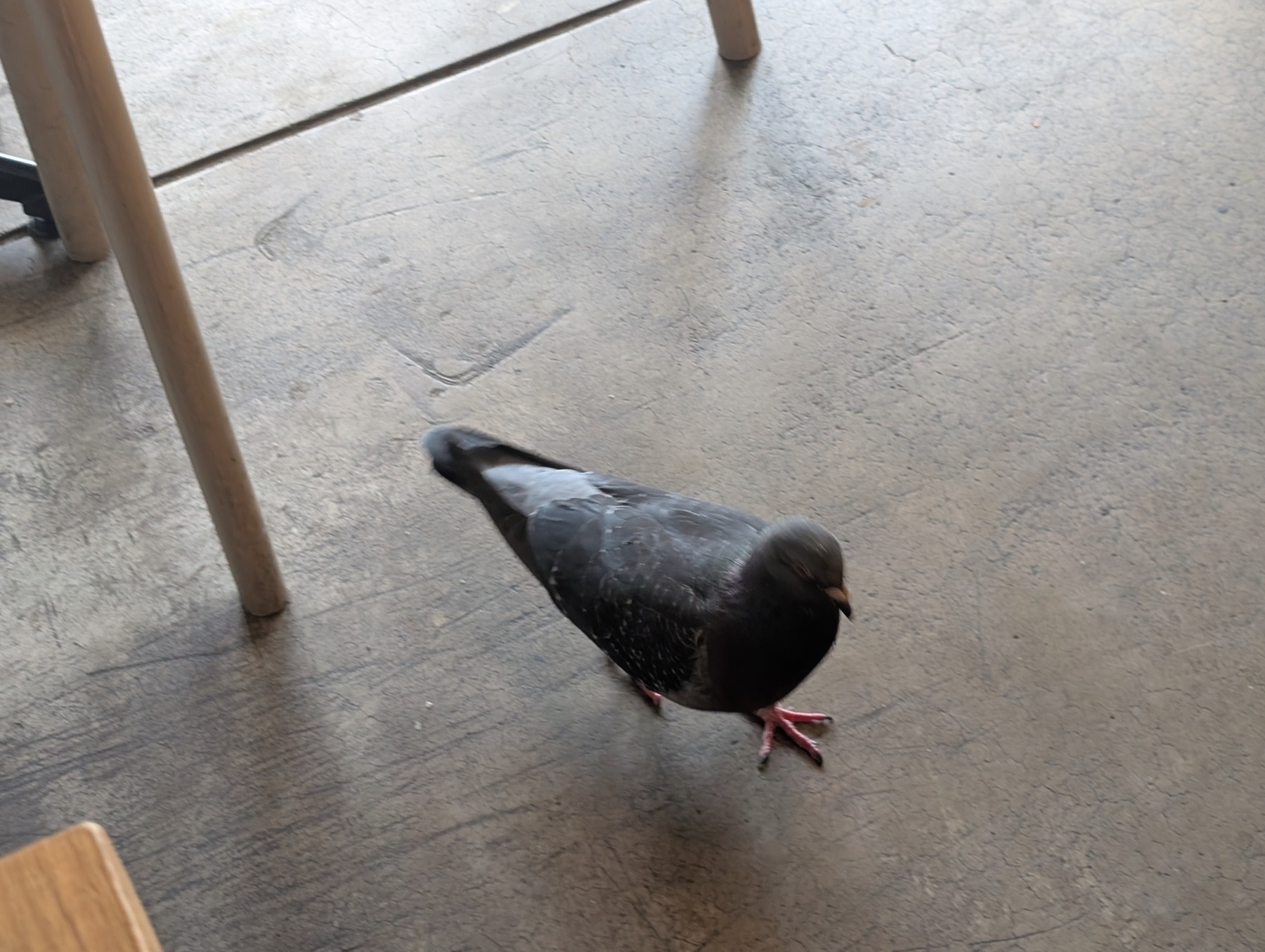-
I appreciate that those making, and putting up, these signs are sticking to this classic phrase.

-
Argh! I keep forgetting Micropub wants everything to be an array. Setting a property in a
h=postPOST request to a plain old string doesn’t do anything. It took me 30 minutes of faffing about trying to get draft posts working before I turned to Claude Code to get the solution. -
Not that I need more social media consumption in my life, but I do wonder if it’s possible to follow Mastodon profiles in a Mastodon client, while responding to them via Micro.blog. I would like to follow a few people who post on Mastodon, but they’re really chatty, and I rather avoid having them in my Micro.blog timeline. I could use my Mastodon account to follow them, but that’ll mean responses come from there, and not from Micro.blog. Is there a way to bridge the two, I wonder?
-
I keep forgetting that I have a Nebular subscription. I should use it more often.
-
New Theme, Who's Dis
451 words about switching over from Tiny Theme to Mythos. Continue reading →
-
Im happy to report that you can take portrait selfies in landscape on the new iPhones. Absolute sicko behavior, of course, but it’s there!

Portrait selfies with a phone in landscape orientation I can give or take. What I want is landscape photos from the phone in portrait. Device manufacturers, make that, then we’ll talk.
-
Retired my old kettle and set up my new one. Currently drinking my inaugural cup of tea from it, while I work on my site.

-
Just read this week’s P&B with @birming. Loved it. It’s always fascinating reading these interviews from people you follow.
-
🛠️ Signboard
A kanban app that writes Markdown files by Colin Devroe. Looks interesting. Will take a look when I need a standalone Kanban app.
-
Can definitely recommend Nurse On-Call for any Victorian unsure about how to respond to a health problem. The queue was short, almost immediate, and the nurse took their time going through my concerns and symptoms. I got peace of mind and some material on what to do next. Wonderful service.
-
Speaking of cafes, this pigeon is determined to get inside. It was shooed out a few minutes ago, but it wandered back in again. It’s at my feet while I write this.


-
Whenever I go to the cafe, I bring along my iPad to read through my RSS feeds. One day, a kid walked by my table and took a peek at my iPad screen. I can only image their disappointment when they discovered I had no video or game playing on there. 😏
-
Learning To Like Sentinel Errors In Go
Coming around to returning a result or an error in the Go programming instead of returning nil for both. Continue reading →
-
“Get out more” goal for September achieved. ✅
Boardgames at the Melbourne Central Lion Hotel again. Tonight, it was Codewords (had a go at being the spymaster this time) and Dixit.
-
🛠️ Glow: Render markdown on the CLI, with pizzazz! 💅🏻
Terminal Markdown viewer. Nice little app. My one criticism is that it should default to opening a file argument in the viewer, rather than just rendering the file to stdout. But otherwise, sure to be a useful little tool.
-
I saw Manton use ChatGPT to try and guess his age, in the context of OpenAI adding some age gating features. I was curious to know how it’d go with my age, so I did likewise, giving it this prompt:
Based on your memory of past conversations, along with the various posts I make on sites such as lmika.org, can you guess my age?
It’s guess:
Putting all that together, my best guess is that you’re probably in your late 30s to early 40s.
Great guess! I’m 40, so bang in the middle.
Here’s a public link to the conversation outlining it’s reasoning (hey, first use of public ChatGPT share links!). All pretty accurate, especially around the topics of nostalgia.
-
Spotted on my way to work: a Little Black Cormant and an Australasian Darter preening by the river.

-
There’s not much us Android users have over iOS, but there is one: Myki integration with Google Wallet, with auto top-up. It really is quite nice not to worry about running out of credit when you’re rushing to catch the train.
-
It’d be nice if ChatGPT had an option to link to a specific position in a chat session while keeping the chat private. That way, I can effectively create a bookmark that I can place in notes and refer to later. I’ve started doing this for Slack messages too, and it’s been quite useful.
-
The files you create are more important than the tools you use to create them. Apps are ephemeral, but your files have a chance to last.
This is excellent advice, and one that I’m trying to practice better. I’d also argue that this can be extended to a software design principal, which is to assume the data will outlive the system. Therefore, prefer a data scheme that will be long lasting, and worry less about the systems that operate over it. This is why I found it distasteful to offload schema designs to ORMs.
-
CSS is turning into quite a capable programming language. I just learnt that the language is getting custom functions and an if function. I’m quite excited to hear this.
-
Credit to Metro. A tree blew over the line mid-afternoon, suspending the train line, and I was worried it would affect my commute. But they managed to clear it before peak time, and I experienced a smooth ride home. Very impressive recovery. 👍
-
It’s amusing to imagine how far Apple’s bizarre, corporate-esque copywriting goes. Would one be able to go into Caffè Macs in Apple Park, pick up a packed sandwich, and see printed on the label:
With this sandwich, our focus is to maximise sustenance and nourishment so we can drive continued living in our employees.
We’ve also introduced a new ecosystem of ingredients to compliment this unique sandwich. Thanks to the incredible availability of nuts and other allergens, we’re able to create a new awareness that this sandwich may contain some of these.
😼
-
I’ve seen a few strange things in parks, but this disco ball is probably one of the strangest.

-
Liked this post by Robin Rendle.
Folks will spend so much time adding fancy illustrations and making sure the icons aren’t blurry but when it comes to words and actions in interfaces they seem to gloss right over them.
It’s a well known trope in UI design that the user generally doesn’t read things. So I can forgive those who feel that words in UIs are not as important as icons. But I do occasionally wonder if the pendulum has swung too far. More than once I’ve encountered a UI with icons, without any description, that I didn’t understand, and it had an effect of my ability to use it.
Every word in a UI needs to act like a hammer, with each successive word the interface should become clearer, more easily understood. If you put a word like Explore in an interface it might make sense but now add another navigation item like Discover beneath it and now both words make no sense. The UI has collapsed into meaninglessness and folks are forced to click and think and furrow their brows to understand the difference between the two.
I didn’t even consider the case where words could interact with each other this way, like elements in a chemical reaction. But seeing it described like this, it makes total sense.
The cynic in me worries that the folks who made this interface don’t want me to read the popup or modal or alert or web page or list of settings or whatever and they really just want me to click a button. The words are designed to be longwinded and confusing. They just want the click.
I think it’s easy to read this as the UI design being intentionally obscure, just to herd the user through specific interaction flows that benefit the company. I’m sure there’s a bit of that. But I also think that some designers are simply trying to help the user trying to achieve what they want out of their software. It may be that they just haven’t got the right words to explain it, being someone who’s working on the software every workday. And I don’t know how this could be improved. Adding more words for the user to not read doesn’t seem to be the solution. Maybe more user testing? Some way to better understand how the user thinks the software works.
Anyway, very interesting post.